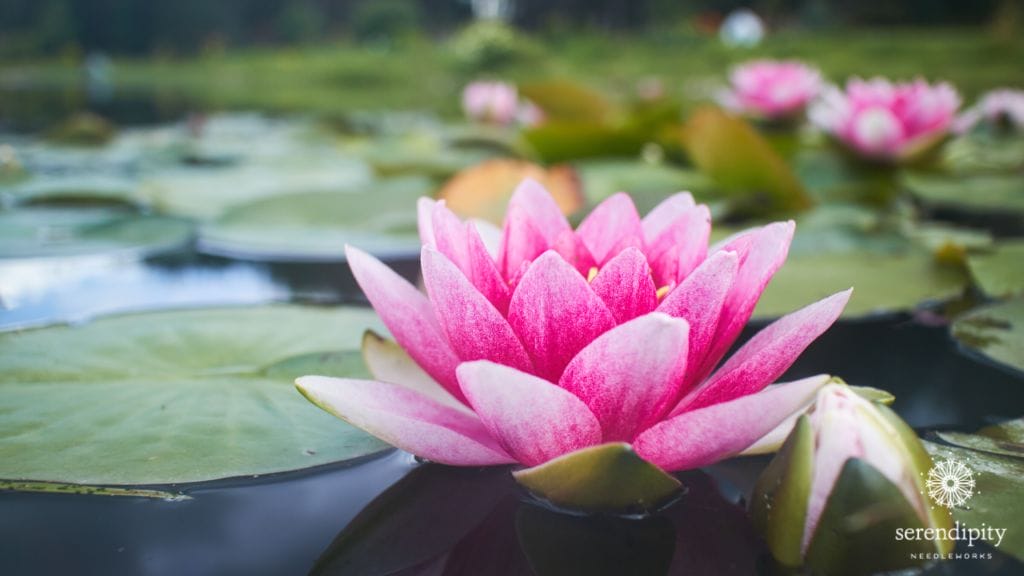Well hello there, lovely! Last week’s adventure through Desert Botanical Garden was oodles of fun, but I think you’re gonna like this week’s destination just as much. 😉 It’s quite different and it has a very interesting history. (All you opera fans are gonna get a kick out of learning more about Madame Walska!!) So, hop aboard the Serendipity Express with me and let’s take our magical virtual vacation tour bus to a place that’s famous for its lotus flowers…

Lotusland in lovely Montecito, California
(Gee, that was quick.) 😉
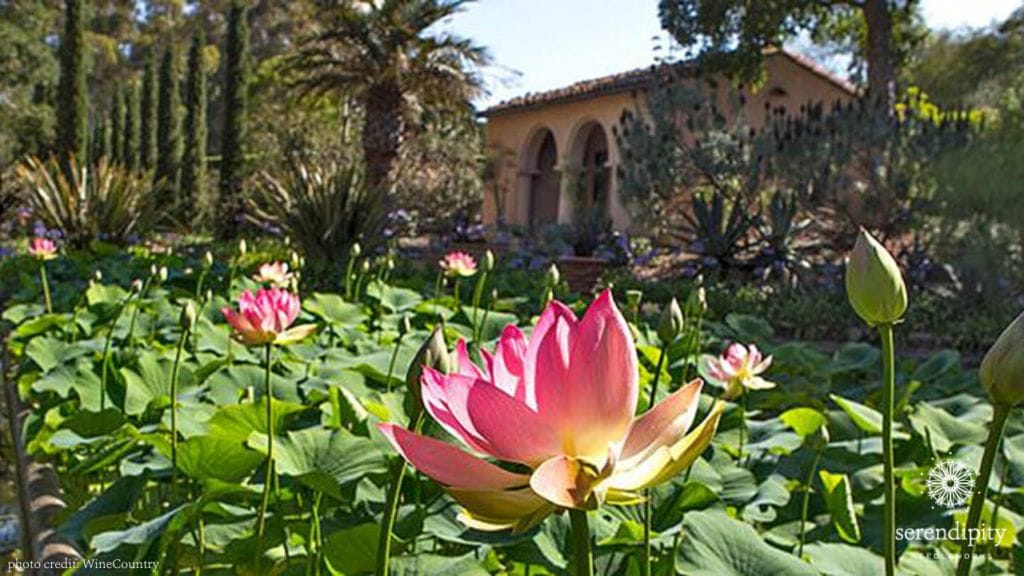
Lotusland is a non-profit botanical garden…
that actually encompasses the estate of the late Ganna Walska, a Polish opera singer and gardening aficionado. Her opera career was rather ho-hum, but her creativity as a landscape designer lives on through the many distinctive gardens she established at Lotusland.
Here are a couple of pictures of her.
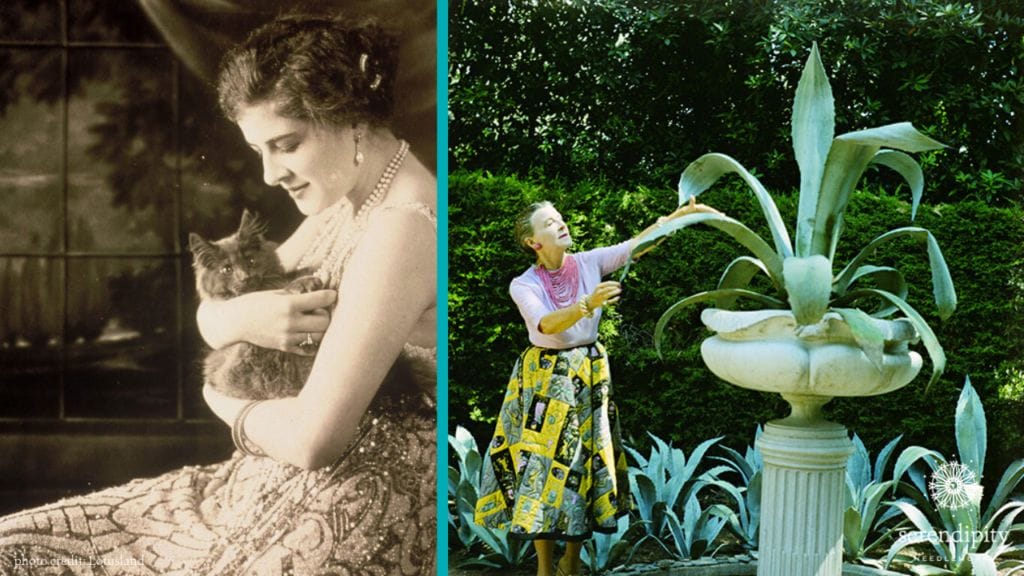
One of her first forays into designing gardens was the transformation of her leaky swimming pool into a water garden full of lovely lotus flowers like the one you see on this needlepoint canvas by Lee Designs…
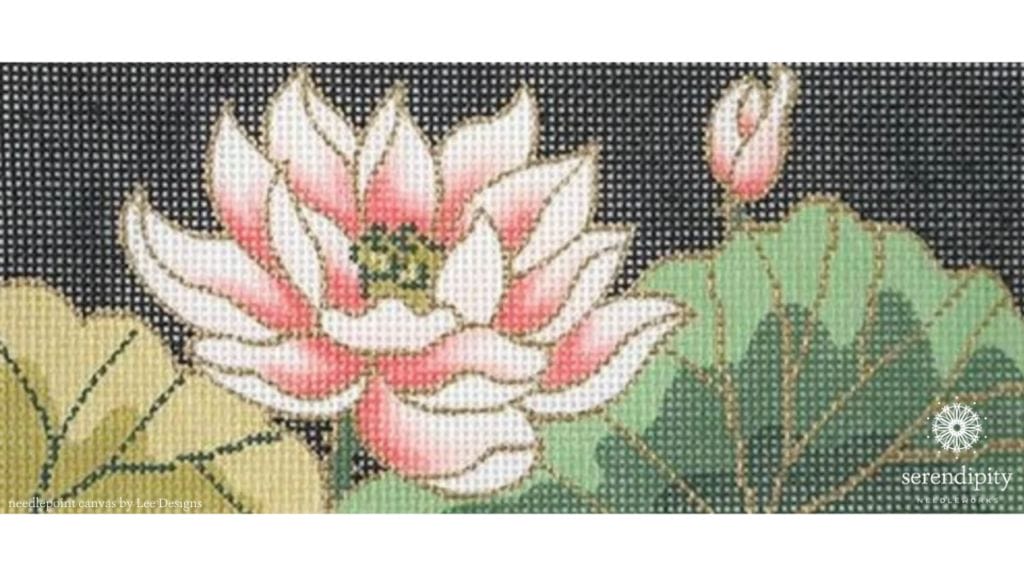
Of course, lotus flowers aren’t the only kinds of flowers that you’ll find on needlepoint canvases…
Designers paint all sorts of different flowers – from amaryllis to zinnias – and everything in between! Sometimes the flowers on your needlepoint projects are small. And sometimes they’re large. So what’s a stitcher to do when trying to decide which stitch to use for the flowers on her (or his!) project? That’s a terrific question – and it’s one that we’ll chat more about in today’s episode of Needlepoint TV™ at 3:00 p.m. CDT over on the Serendipity Needleworks Facebook page. I hope you’ll join me. 😉
Since we only have a short time together here today, though, whaddya’ say we take a look at a terrific stitch for larger flowers?
The diagonal Roumanian stitch is one of my favorite stitches for large flowers.
It’s super easy to execute – work the stitches just like you see in the diagram below and you’ll be golden! (Note that you’ll complete each stitch “unit” before moving along to the next stitch unit in the row.)
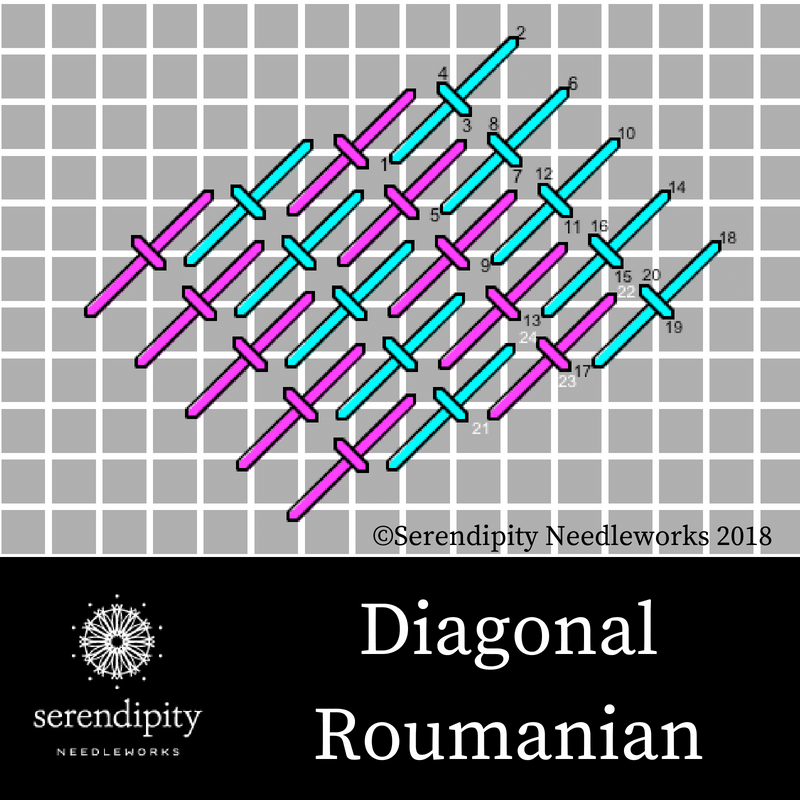
The diagonal Roumanian stitch is a medium-size stitch, so you’ll need to have plenty of space to establish the pattern. That’s why I like to use it on larger flowers, like these magnolias from Julie Mar Designs…
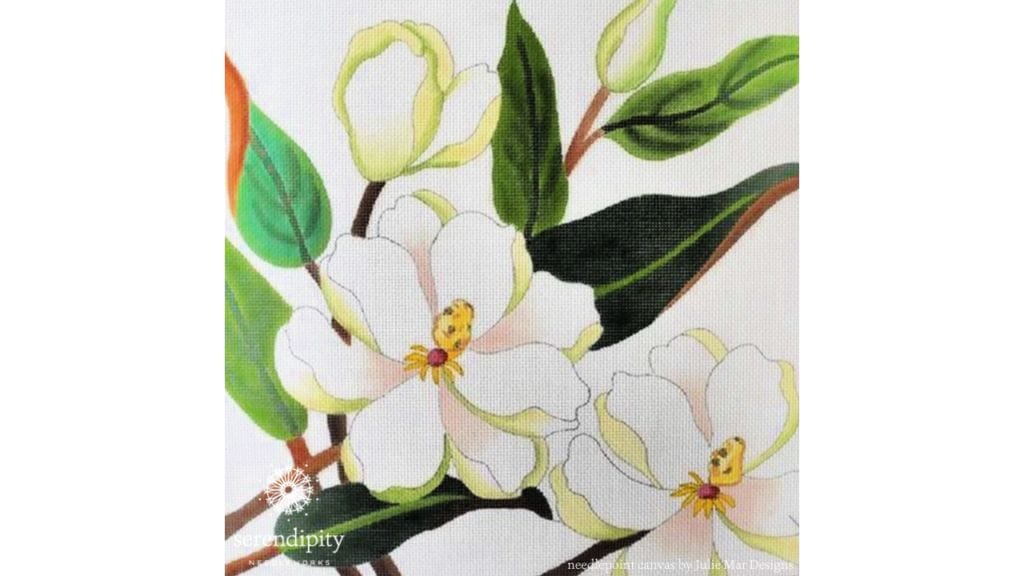
I’m using Waterlilies to work the diagonal Roumanian stitch.
Waterlilies is a 100% silk 12-strand divisible embroidery thread from the Caron Collection. At last count, it’s available in 254 hand-dyed colors and each skein holds six yards. Be sure and purchase enough thread in the same dye lot to complete your project, as dye lots can vary wildly.
I recommend using four strands of Waterlilies on 18 mesh canvas and six to eight strands on 13/14 mesh canvas. If you want to allow a little of the artist’s shading to show through your stitching, use fewer strands. Be sure and use your laying tool to ensure that all of the strands lay smoothly on the surface of your canvas.
I’m actually using three strands of Waterlilies (117-Fresh Pink) in a #22 tapestry needle to work my stitch sample on a piece of 18 mesh needlepoint canvas. And I’m doing that because this stitch has two layers: the longer 2 x 2 diagonal stitch and the reverse tent stitch that ties the longer stitch down. Using three strands of thread prevents my stitches from becoming too bulky. 😉
Oh my – it’s been so much fun sharing this fun stitch/thread combo for flowers with you!
Thank you so much for joining me here today. Next week, we’ll visit our final destination on the 2020 Spring Threadventure Garden Tour. I can’t wait to share it with you.
In the meanwhile, let’s check into our cozy room at the Montecito Inn in beautiful Santa Barbara…

And remember to join me for a brand new episode of Needlepoint TV™ at 3:00 p.m. CDT every Thursday afternoon. 🙂
Until next week, happy stitching!
XOXO!!!



